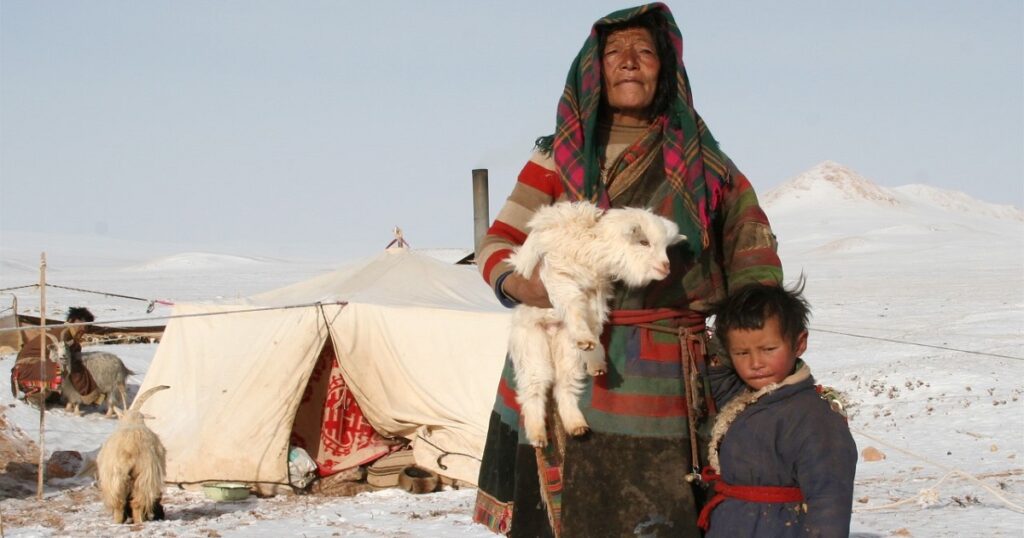“Leaving human rights on the periphery is simply not an option, because rights-based conservation is the most effective, efficient, and equitable path forward to safeguarding the planet,” concludes David Boyd, the special rapporteur.
Boyd goes on to emphasize the necessity of involving indigenous people and local communities who “must be acknowledged as key partners in protecting and restoring nature … their human, land and tenure rights, knowledge, and conservation contributions must be recognized, respected, and supported.”
Ironically, a conference of 190 countries will meet in October to finalize the Framework in China, where the government’s relentless assault on human rights and the environment in the Tibetan Plateau stands in stark contrast to the principle of environmental justice.
For over six decades, the regime of the People’s Republic of China has deployed environmental destruction as a key weapon in its campaign to systematically dismantle Tibetan culture in the pursuit of expansionism, assimilation and hegemony.
A striking example is the PRC’s declaration that it plans to construct dozens of dams on Tibet’s rivers in the decade ahead. Six of the world’s major rivers originate in Tibet, and nearly 2 billion people across the Asian continent depend on the healthy flow of these rivers. Such extensive damming will place the water supply of countries throughout the region at risk and under the Chinese government’s control. Thus, denying Tibetans’ self-determination over their own resources will create a cascade effect that also denies downstream countries the right to their self-determination, providing the PRC another tool to expand its global power.
The Chinese government’s forcible relocation of Tibetan nomads from their ancestral grassing lands is another example of the regime’s strategy to exert control over indigenous peoples through the repurposing and destruction ancestral lands. Based on available data, at least 1.8 million Tibetan nomads have been resettled in sedentary houses under PRC policies in a two-pronged plan to erode Tibetan identity while cashing in on pit mining, logging, damming and other forms of environmental degradation. The plunder of Tibet violates the increasingly scientifically, pragmatically and ethically validated linkages between environmental progress and basic human rights, as expressed in the special rapporteur’s statement.
A third devastating example is the PRC’s indiscriminate clear-cutting in the biologically rich Tibetan forests. This deforestation represents double indemnity. Forests are carbon sinks, therefore continued logging will exacerbate climate change, undermining global climate goals. Given that forests function to preserve watersheds and waterways, clear cutting will also worsen the region’s water challenges.
These destructive activities to further PRC control have already resulted in calamitous disasters in Tibet. At the same time, Tibetan protests against environmental damage to their homeland have been met with brutal responses from the Chinese Communist Party. Major recent incidents include:
- In 2009, toxic chemicals from a mine near the town of Lhagang leaked into the river, resulting in massive fish deaths.
- 2010 saw over a thousand people in Drugchu die when landslides ripped through the deforested hills surrounding the town and Tibetan demonstrators against a mining operation in Palyul were gunned down by Chinese police.
- Another mudslide at a Gyma mine in 2013 claimed 80 people.
- That same year, hundreds of Tibetans were beaten and tear-gassed while protesting a Chinese mine in Dzatoe.
- 2016 brought more protests as Tibetans and police faced off in Amchok in response to mining at Gong-ngon Lhari, a sacred mountain.
Over its decades-long occupation, the PRC’s strategy of exploiting the Tibetan environment and oppressing its people have gone hand in glove, one reinforcing the other. This is particularly offensive because it denigrates deeply held Tibetan Buddhist beliefs in the protection of all living things. His Holiness the Dalai Lama has expressed this belief, which dramatically contrasts Tibetans’ historic relationship to the environment with China’s brutal disregard, stating:
“For over 1,000 years we Tibetans have adhered to spiritual and environmental values in order to maintain the delicate balance of life across the high plateau…inspired by the Buddha’s message of non-violence and compassion…we have sought to respect every form of life, while our neighbours live undisturbed.”
Embedded here is a message of hope and pragmatism. It is impossible to survive the global problem of environmental disruption without recognizing it as a collective human challenge. It is a challenge that depends on transboundary accord and mutual respect. Failing to embrace that wisdom places our global home and future generations at grave risk.

